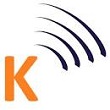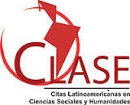Associativismos de extrema direita na era pós 11 de setembro
DOI:
https://doi.org/10.5433/2176-6665.2011v16n2p123Palabras clave:
Extrema direita, Intolerância, 11 de setembro, Supremacia branca, XenofobiaResumen
Um mapeamento mais preciso das ações de “grupos de ódio”, bem como a sua repressão, passou a ser incluído no tratamento estratégico de atos de terrorismo e de ameaça à segurança nos Estados Unidos nas últimas décadas, na mesma tendência do ocorrido em países europeus em função do crescimento da extrema direita e da xenofobia. Dois marcos cronológicos são fundamentais para compreender mudanças significativas na postura de autoridades norte americanas sobre a ação de “grupos de ódio”, sejam eles supremacistas ou milicianos: os atentados de 11 de setembro de 2001 e a eleição de Obama em 2008. Este artigo procura contribuir para o entendimento, tanto da mudança de concepção de “terrorismo”, quanto da identificação de efeitos desta mudança refletidos em novos enquadramentos de crimes de ódio e na classificação e mapeamento das ações de grupos extremistas norte americanos de direita.Descargas
Citas
BELLO, Marisol. White supremacists target middle America. USA Today, 21 oct. 2008.
BERLET, Chip; LYONS, Matthew N. Right-wing Populism in America: too close for comfort. London: Guilford, 2000.
CASTELLS, Manuel. The crisis of democracy, global governance, and the rise of the global civil society. In: INTERNATIONAL SEMINAR FOR A GLOBAL GOVERNANCE, 2004, São Paulo. Anais... São Paulo: IFH- Instituto Fernando Henrique Cardoso, 2004.
CHEN, Stephanie. Growing hate groups blame Obama, economy. 2009. DIAMOND, Sara. Roads to dominion: right-wing movements and political power in the United States. London: Guilford, 1995.
FBI. Intelligence Assessment. A threat assessment for domestic terrorism.Washington: Federal Bureau of Investigation, Department of Justice, 2007.
FBI.Domestic extremism lexicon. 29 mar. 2009. Disponível em: http://www.fas.org/irp/eprint/lexicon.pdf. Acesso em: 1 set. 2011.
FBI.Range and racism: skinhead violence on the far righ. 2008a. Disponível em http://info.publicintelligence.net/Skinhead_Rage_and_Racism.pdf. Acesso em: 1 set. 2011.
FBI.White Supremacist recruitment of military personnel since 9/11. 7 july 2008b. Disponível em: http://cryptome.org/spy-whites.pdf. Acesso em: 1 set. 2011.
HAINSWORTH, Paul (ed.). The extreme right in Europe and the USA. New York: St. Martin’s Press, 1992.
HOFSTADTER, Richard. The paranoid style in American politics and other essays. Cambridge: Harvard Universiy Press, 1996.
IGNAZI, P.; PERRINEAU, P. L’Extreme Droite en Europe: Marginalité du Neofascisme et Dynamique de l’Extrême Droite Post-industrielle. In: GRUNBERG, Gérard (org.). Le vote des quinze: les élections Européennes du 13 juin 1999. Paris: Presses de Sciences Po, 2000. p. 223-242.
IGNAZI, Piero. Extreme right parties in western Europe. Oxford: Oxford University Press, 2003.
IGNAZI, Piero.The intellectual basis of right-wing anti-partytism. European Journal of Political Research, v. 29, n. 3, p. 279-296, 1996.
KALDOR, Mary; GLASIUS, Marlies. Global civil society 2002. Oxford: Oxford University Press, 2002.
KITSCHELT, Herbet; McGANN, Anthony. The radical right in western Europe: a comparative analysis. Michigan: University of Michigan Press, 1995.
MEDEIROS, Sabrina E. Extremismo de direita nos Estados Unidos através da Internet. 2007.
MUDE, Cas. Populism radical right parties in Europe. Cambridge: Cambridge University Press, 2007.
MUDE, Cas. The war of words defining the extreme right party family. West European Politics, v. 19, n. 2, p. 225-248, 1996.
NORRIS, Pippa. Radical right: voters and parties in the electoral market. Cambridge: Cambridge University Press, 2005.
POGUNTKE, Thomas; SCARROW, Susan. The politics of anti-party sentiment: introduction. European Journal of Political Research, v. 29, p. 257-262, 1996.
PUTNAM, Robert. Bowling alone: the collapse and revival of american community. New York: Simon and Schuster, 2000.
RYDGREN, Jens. Explaining the emergence of radical right-wing populism: the case of Denmark. West European Politics, v. 27, n. 3, p. 474-502, 2004.
RYDGREN, Jens. The sociology of the radical right. Annual Review of Sociology, v. 33, p. 241-262, 2007.
SOUTHERN POVERTY LAW CENTER – SPLC. Disponível em: http://www.splcenter.org/. Acesso em: 1 set. 2011.
START. National Consortium For the Study of Terrorism and Responses to Terrorism. Background Report: terrorist attacks in New York city. 2010. Disponível em: http://www.start.umd.edu/start/announcements/announcement.asp?id=185. Acesso em: 1 set. 2011.
STORMFRONT. Disponível em: http://www.stormfront.org/forum/. Acesso em: 8 dez. 2011.
TAGGART, Paul. The new populism and the new politics: new protest parties in Sweden in a comparative perspective. Basingstoke: Macmillan, 1996.
TAGGART, Paul. A Touchstone of Dissent: Euroscepticism in Contemporary Western European Party Systems. European Journal of Political Research, v. 33, p. 363- 388, 1998.
TE-SAT. Eu terrorism situation and trend report. EUROPOL. European Policy Office. 2011.
WALZER, Michael. On toleration. New Haven: Yale University Press, 1997.
Descargas
Publicado
Cómo citar
Número
Sección
Licencia
Los derechos de autor de los artículos publicados en Mediations son del autor; En caso de republicación parcial o total de la primera publicación, se solicita a los autores que indiquen la publicación original en la revista.
Mediações utiliza la licencia Creative Commons Attribution 4.0 International, que proporciona acceso abierto, permitiendo a cualquier usuario leer, descargar, copiar y difundir su contenido, siempre que esté debidamente referenciado.
Las opiniones emitidas por los autores de los artículos son de su exclusiva responsabilidad.
































